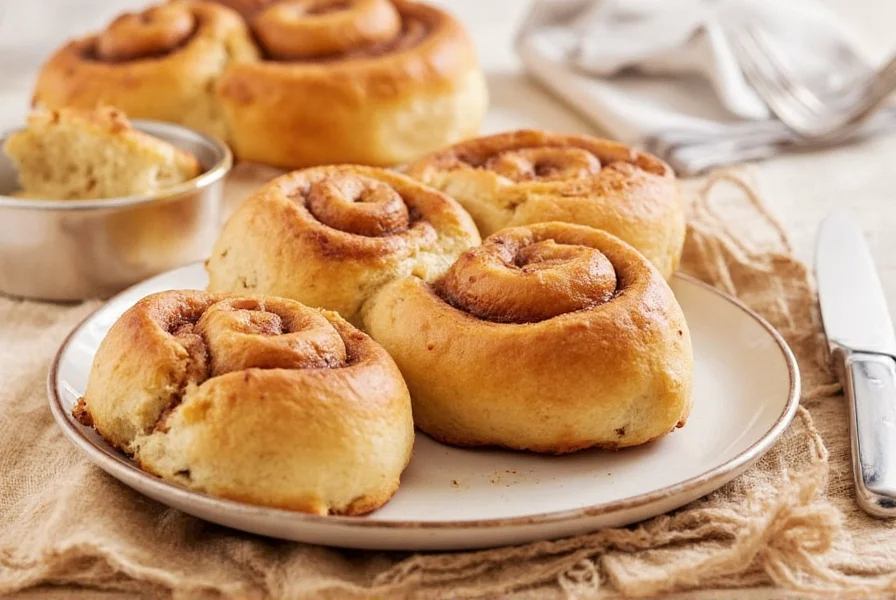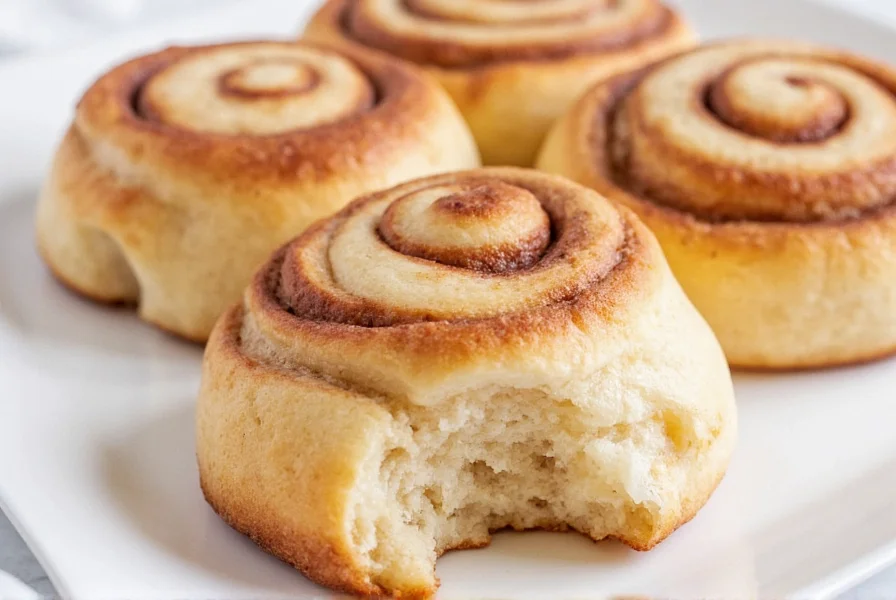For bakers seeking the authentic Sally's Baking Addiction cinnamon rolls recipe, you've found the definitive guide. These homemade cinnamon rolls have become a benchmark for breakfast pastry excellence, with thousands of home bakers praising their pillowy texture and perfectly spiced filling. What sets this recipe apart is Sally's meticulous attention to ingredient ratios and fermentation timing, ensuring reliable results even for novice bread makers.
The Story Behind the Famous Cinnamon Rolls
Sally McKenna developed her signature cinnamon roll recipe early in her blogging career, refining it through countless iterations. Unlike many simplified versions, her approach maintains traditional yeast dough techniques while incorporating modern precision. The recipe first gained traction when food enthusiasts noticed its unusual consistency—bakers consistently achieved professional-quality results without specialized equipment.
What Makes These Cinnamon Rolls Special
The Sally's Baking Addiction cinnamon roll instructions stand out for three critical elements:
- Butter-enriched dough using a unique temperature-controlled mixing method
- Proprietary cinnamon-sugar-butter filling with precise spice ratios
- Cream cheese frosting formulated to complement without overwhelming
Unlike commercial versions, these rolls feature a distinctive layered structure where each bite delivers balanced dough-to-filling ratio. The secret lies in Sally's "room temperature butter" technique for the filling, which prevents dough tearing during rolling while ensuring even distribution.
| Ingredient | Measurement | Critical Function |
|---|---|---|
| All-purpose flour | 4½ cups (540g) | Optimal protein content for structure without toughness |
| Unsalted butter | ⅓ cup (76g), melted | Temperature-controlled for proper gluten development |
| Whole milk | 1 cup (240ml), warm | Precise 110°F temperature for yeast activation |
| Cinnamon | 3 tablespoons (27g) | Specific Saigon variety recommendation for intensity |
Step-by-Step Recipe Execution
Following the original Sally's Baking Addiction cinnamon rolls method requires attention to these critical phases:
Dough Preparation
Mix warm milk (110°F exactly) with yeast and 1 tablespoon sugar. Wait 5 minutes for foam development—this proves yeast viability, a step many shortcut recipes omit. Combine with flour, eggs, and melted butter using the windowpane test to determine kneading completion. The dough should stretch thin without tearing.
Filling Application
The signature filling uses room temperature butter (not melted) blended with brown sugar and cinnamon. Spread evenly, leaving ½-inch borders to prevent leakage. Roll tightly using a bench scraper to maintain consistent tension—this creates the distinctive spiral pattern when sliced.
Proofing Secrets
Unlike standard recipes, Sally recommends 90-minute proofing at exactly 75°F. Use an oven with light on for controlled environment. Rolls should nearly double but still spring back slightly when touched. This precise timing prevents under-proofed density or over-proofed collapse.
Common Variations and Adaptations
Experienced bakers have developed these popular modifications while maintaining the recipe's integrity:
- Overnight preparation: Refrigerate shaped rolls for 12 hours, then proof 60 minutes before baking
- Gluten-free adaptation: Use 400g gluten-free flour blend with 2 teaspoons xanthan gum
- Maple variation: Substitute ¼ cup maple syrup for granulated sugar in frosting
Troubleshooting Guide
Even with Sally's detailed cinnamon roll instructions, issues occasionally arise. Here's how to fix them:
Dense Rolls
Cause: Over-flouring during kneading or under-proofing
Solution: Measure flour by weight, not volume. Verify proofing duration—rolls should reach 1.8x original size
Filling Leakage
Cause: Butter too warm or insufficient border left when rolling
Solution: Chill rolled log 15 minutes before slicing. Always leave ½-inch clean edge

Reader Success Stories
Thousands of home bakers have documented their Sally's Baking Addiction cinnamon rolls experience across baking forums. Consistent praise focuses on the recipe's reliability—even first-time yeast bakers report success when following the temperature guidelines precisely. Many note the frosting's perfect sweetness balance, avoiding the cloying quality of commercial versions.
Professional pastry chefs frequently recommend this recipe for its educational value in teaching fundamental yeast dough principles. The methodical approach builds foundational skills applicable to other enriched doughs like babka and challah.
Frequently Asked Questions
Can I make Sally's cinnamon rolls without a stand mixer?
Yes, the dough can be mixed by hand. Combine ingredients in a large bowl and knead on floured surface for 8-10 minutes until smooth and elastic. The windowpane test remains the best indicator of proper development.
Why does my dough tear when rolling?
This typically occurs when the gluten hasn't relaxed sufficiently. After kneading, let the dough rest covered for 10 minutes before rolling. Cold dough or excessive flour during rolling can also cause tearing.
How do I prevent burnt bottoms?
Place a second baking sheet on the oven rack below your pan to shield from direct heat. Most ovens have hotter bottom elements. Baking at 350°F (not higher) for 28-32 minutes yields optimal results.
Can I freeze these cinnamon rolls?
Absolutely. Freeze unbaked rolls on their baking sheet, then transfer to freezer bags. When ready to bake, thaw 12 hours in refrigerator then proof 60 minutes at room temperature before baking. Fully baked rolls freeze well for up to 3 months.
What's the best cinnamon variety for this recipe?
Sally specifically recommends Saigon cinnamon for its intense, sweet flavor and deep red color. It contains higher cinnamaldehyde content than common Cassia varieties, delivering more complex spice notes without bitterness.











 浙公网安备
33010002000092号
浙公网安备
33010002000092号 浙B2-20120091-4
浙B2-20120091-4